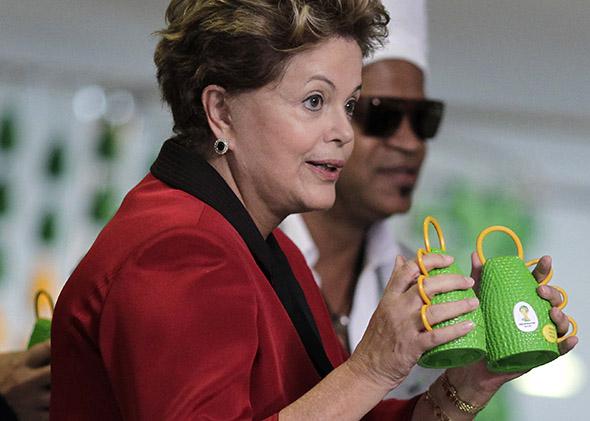Although the 2010 World Cup saw its fair share of breakout stars, nothing stole the show quite like the vuvuzela. The infernal buzzing of the South African horns was loud enough to cause hearing loss, prevent players from being able to communicate on the field, and prompt TV audiences across the world to wonder why a hive of deranged bees had taken up residence in their television sets. Now, as the 2014 World Cup has kicked off in Brazil, there’s a new noisemaker in the news. Though it’s in its infancy, the caxirola has already managed to achieve something that the vuvuzela never did: It’s been banned from its home World Cup.
While the vuvuzela is a traditional part of South African soccer culture, the caxirola is a recent invention. Brazilian percussionist Carlinhos Brown designed the instrument for the Brazilian Ministry of Sport in 2012, with the specific intention of creating a musical gizmo for the World Cup. In taking on this project, Brown told the Wall Street Journal, he hoped to craft an environmentally friendly instrument that spoke to Brazil’s Afro-Caribbean roots. He “was looking for a sacred instrument,” Brown explained.
Brown’s noisemaker resembles the traditional Brazilian caxixi and takes the form of closed basket filled with small synthetic particles. Sounding much like a maraca, the caxirola is smaller and—mercifully—25 to 30 decibels quieter than the vuvuzela, which tops out at a whopping 127 decibels. (For comparison, your average chainsaw is about 100 decibels.)
The caxirola was quickly endorsed by Brazilian President Dilma Rousseff, Brazil’s Ministry of Sport, and FIFA. However, whereas Brown wanted his sacred instrument to be reproduced without personal financial gain, FIFA had no such qualms. Likely reeling after missing out on centralized control of the lucrative vuvuzela racket, FIFA promptly branded caxirolas “the official instrument of the 2014 FIFA World Cup,” adorned them in team colors, and began selling the noisemakers for $14 a pop through its online store.
Unfortunately for FIFA, the grenade-like noisemakers also happen to make good projectiles. Citing safety concerns after an April 2013 game between E.C. Bahia and E.C. Vitória, where angry fans started chucking their caxirolas onto the pitch, Brazil’s Ministry of Justice banned the rattles from the 2013 Confederations Cup. The ban was later extended to include the World Cup. While fans can still purchase caxirolas on the street or online, they are prohibited within the World Cup stadiums.
If you’re mourning the premature loss of the caxirola, the sacred instrument that never had a chance, you can be comforted by the fact that it’s in good company. While the vuvuzela was allowed to drone on in South Africa despite complaints from players and fans, FIFA has ruled it out in 2014. What other objects are forbidden? Fireworks, megaphones, and—of course—outside food.
